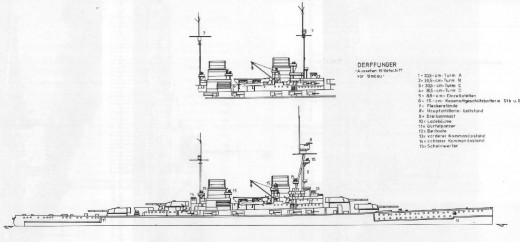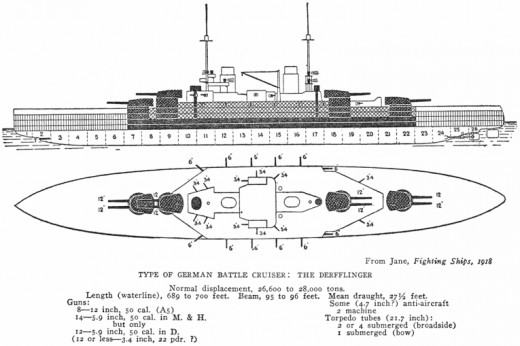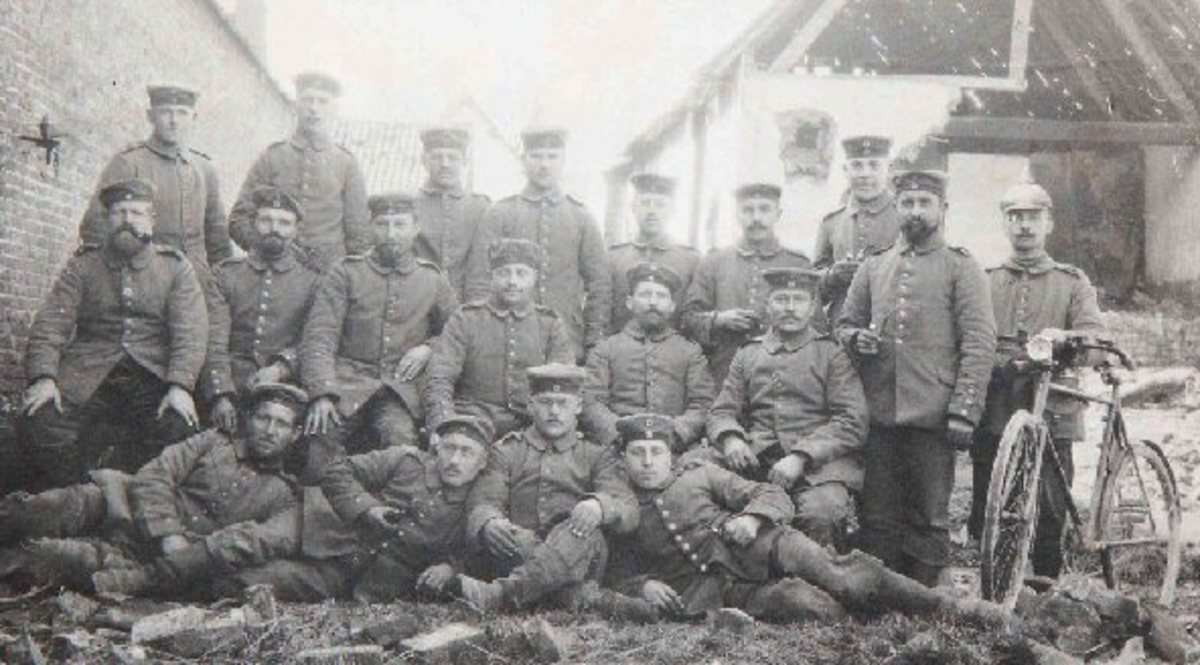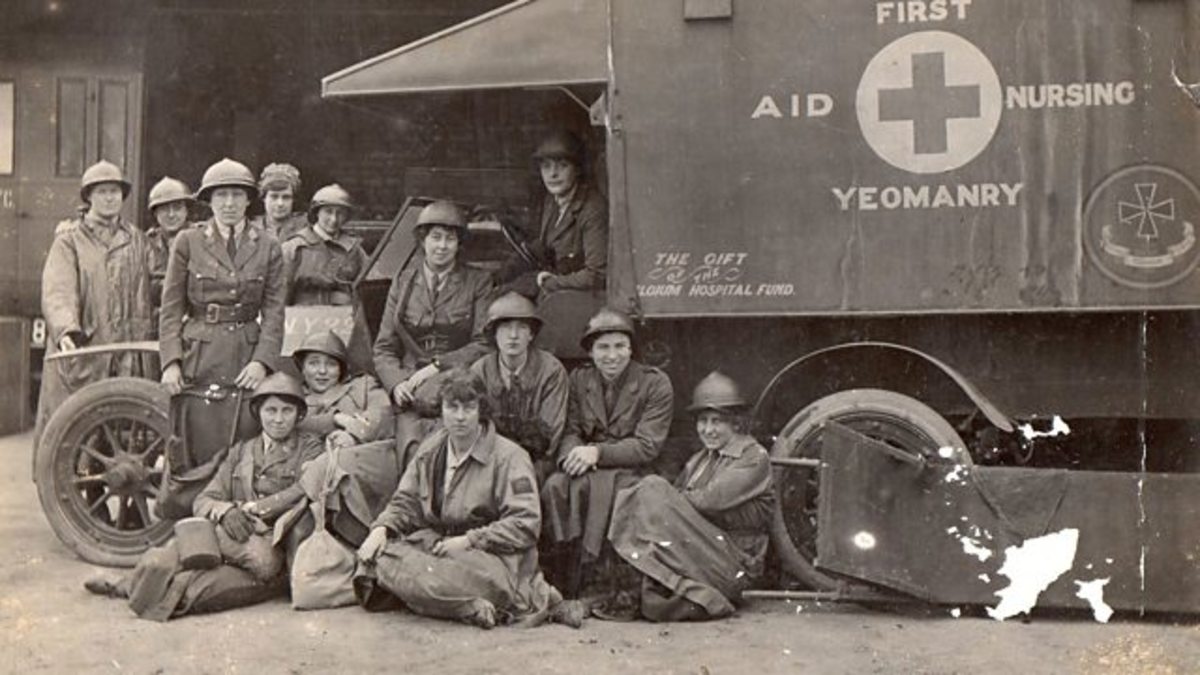- HubPages»
- Education and Science»
- History & Archaeology»
- History of the Modern Era»
- Twentieth Century History»
- World War I
World One War: Worlds Fastest Battleship




Although out-dated by World War One, Germanys Navy proved at times, to be the better against Great Britain’s Navy.
Germany’s skill, ingenuity and efficiency was wholly proven in the design and use of the ‘Derfflinger Class’ Battle Cruiser.
The ships of the ‘Derfflinger Class’ were considered to be the best battlecruisers completed up until 1918. The design was begun in 1910 and continued until 1912. The class consisted of sisterships Derfflinger and Lutzow and the near-sister Hindenburg.
Following the design and completion of SMS Seydlitz in 1909, the German Admiralty was asked to design the requirements for the new cruiser or cruisers of 1911. The main issues which faced the German Navy, which were outstanding from the Seydlitz, were the number of shafts i.e. engines and the issue of armament.
Parts of the German Navy believed that the use of a three-shaft arrangement would allow the use of a Diesel engine on the central shaft. The advantages to this system were viewed as being better transfer of fuel, saving in price and personnel and thermal efficiency.
In order to save weight, a construction design which had been previously applied to smaller vessels was used.
Essentially a longitude frame was used for the construction of a ships skeleton. Previous German Cruisers were designed and built using a system of mixed longitudinal and transverse frames. Of course with the constant ‘up-gunning’ and increase of size of the vessel, the demands and the stresses on the longitude frame increased. This structural issue was combated by employing a longitude frame for construction.
The key attribute of the ‘Derfflinger Class’ Battlecruiser was the propulsion…
By the beginning of the SMS Derfflinger’s construction, the German admiralty believed that the Diesel engine was not ready for use. Instead of using a three-shaft system, the designers reverted to using a four-shaft arrangement. The three ships of the class were each equipped with two sets of marine turbines, which in turn drove a pair of 3-bladed screws.
Each set of turbines consisted of a high and low pressure turbine. The key to this design was that whilst the high pressure machines drove the outer shafts, the low pressure turbines revolved the inner pair.
In terms of steam, steam was supplied to the turbines from 14 coal-fired double boilers and eight oil-fired boilers. Each of the three ships was equipped with a pair of turbo electric generators and a pair of diesel-electric generators that provided an immense 1,660 kilowatts’ at 220 volts.
The engines for the Derfflinger and the Lutzow were designed to provide 63,000 shaft horsepower (47,000 KW) at 280 revolutions per minute.
The Derfflinger achieved 280 revolutions per minute, Lutzow 277 revolutions and the Hindenburg 290 revolutions.
During trials, the Derfflinger’s designed speed was 25.5 knots but remarkably achieved 26.5 knots. It must be noted that these speeds were conducted in shallow waters due to the war, but in deeper water, speeds of 2 knots higher could have been expected.
The Derfflinger carried up to 3,500 tons of coal and upwards of 1,000 tons of oil, and at a cruising speed of 14 knots, could have a range of 5,600 nautical miles!
In comparing the ‘Derfflinger Class’ with British Battlecruisers, HMS Dreadnoughts turbines could output 17,000 Kw of power. Further to this, HMS Dreadnought was propelled by 4 shaft Parsons direct drive steam turbines. The British ship was designed for a speed of 21 knots, but reached 21.6 knots during her sea trials. At full fuel capacity, HMS Dreadnought could steam for 6,620 nautical miles at a cruising speed of 10 knots.
Although faster than the Royal Navy’s Dreadnought Class vessels, the German ‘Derfflinger Class’ Battlecruiser was slower when at cruising speed. This may be due to the different types of turbines and engines used.
In looking at the ships performance at sea, Germanys ‘Derfflinger Class’ ships were excellent in all waters. The ships manoeuvred well but slowly, this was due to the ships being slow at answering the helm. In particular, the metacentric height was reduced to 2.6 meters, which was designed to reduce stiffness. With the rudder hard over, there was significant speed loss and an 11 degree heel.
In conclusion, Germanys ‘Derfflinger Class’ cruisers were excellent ships in combat, due to their weight distribution and percentages of weight allocated to the various vital sections of the ship. Their design was a credit to all Navies of the world and in particular the German Navy. Although more lightly armed and more armoured than Britain’s cruisers, each of the three ships performed magnificently.
If YOU would like a more detailed compariosn of the vying navies of World War One, RESERVE YOUR COPY of DUGOUT WW1 at the links below and get access to pictures, articles and video links








